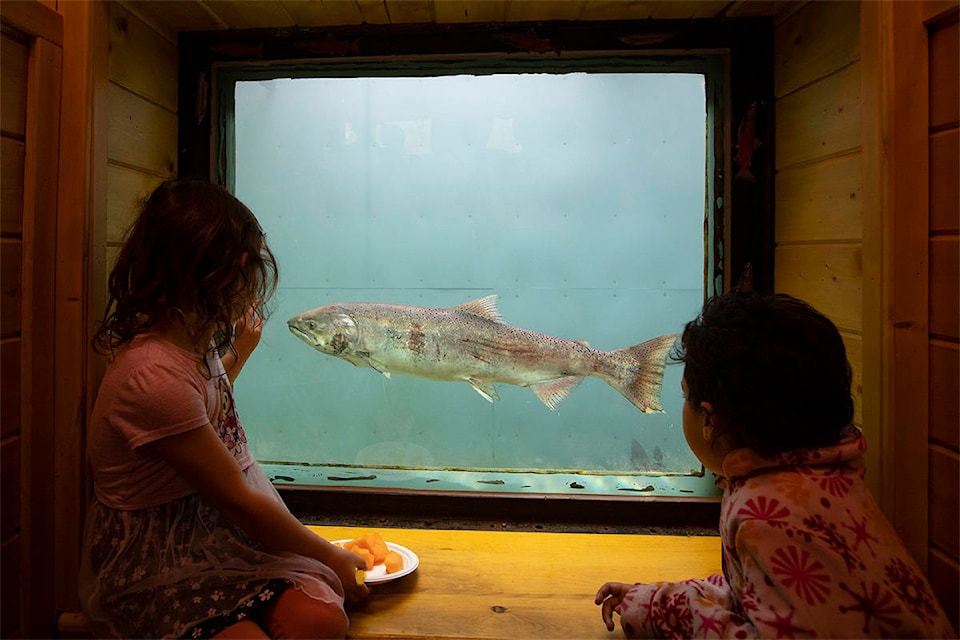This year’s Yukon River Chinook salmon run will not see nearly enough fish make it to their Canadian spawning grounds to meet escapement goals, with fall chum all but guaranteed to follow the same trajectory.
With the run nearly complete, only about 32,000 Chinook had been counted by the sonar station at Eagle, in Alaska near the border, as of Aug. 17, Jesse Trerice, the Yukon River fishery manager for Fisheries and Oceans Canada, said during an in-season teleconference Aug. 18.
An international treaty governing Yukon River salmon aims to get a minimum of 42,500 Chinook to their Canadian spawning grounds.
Trerice said the current numbers at Eagle “do not align with what was expected” based on counts from the Pilot Station sonar, which suggested 76,000 Canadian-origin Chinook had entered the river, and the conservative measures Alaska officials took this year.
In the Yukon, the Klondike sonar had counted 406 Chinook as of Aug. 14, or about 17 per cent of the average number of fish counted in previous years, according to Trerice. The Pelly sonar had counted just more than 5,500 as of Aug. 17, or around 71 per cent of the average passage for that date; the Big Salmon sonar had counted just more than 1,300 of of Aug. 15, around a quarter of the average count.
The Whitehorse fish ladder had only seen 36 Chinook as of Aug. 17, which makes up only about three to four per cent of the average count for that date.
Trerice said that due to “insurmountable operational challenges” related to COVID-19, there will be no sonar on the Porcupine River this year, but department staff will be travelling to Fishing Branch this weekend to set up the monitoring project there.
Due to the poor showing, Fisheries and Oceans Canada has maintained all closures on Chinook harvesting in the Yukon, Trerice said, and is also in support of a recent recommendation by the Yukon Salmon Sub-Committee for First Nations to stop fishing, too.
Teslin was the only Yukon community that gave an update on local conditions during the teleconference, with a spokesperson saying no one had been fishing and people were relying on salmon bought from elsewhere instead.
Meanwhile, the outlook for the fall chum run, which follows the Chinook run, has grown even bleaker.
A pre-season forecast called for a run of somewhere between 827,000 to 1.04 million fall chum. Alaska officials, earlier this summer, said the run was actually looking to be less than 450,000 fish; however, Jeffrey Estensen, the Alaska Department of Fish and Game’s fall season area management biologist, said on the teleconference that the total run size would not be “probably less than 200,000 fish.”
That would make it the smallest run on record.
“Right now, where we stand as far as management is concerned is that there is no salmon fishing, no fall chum salmon fishing in the entire Yukon River drainage in this point in time,” Estensen said.
That includes subsistence fishing for Alaskans; Estensen explained that the department’s management plan requires a run size of at least 300,000 fish to allow for fishing of any kind, but with only 108,000 fall chum counted at Pilot more than halfway through the run, it was “unlikely” that any opportunities would open up.
The Yukon River coho run, which doesn’t typically cross into Canada, is “not looking stellar at all,” he added.
“Overall, (it’s) just not been a good year for fishing, for fish for the fall season,” he said.
Callers checking in from two Alaska communities said that some residents were considering getting rid of their dog teams, on which they rely heavily on fall chum to feed.
Another Alaskan said that normally, parts of the river would smell so strongly of fish this time of year that people could taste the scent. This season, however, the water has been empty, and even the bears have moved on from their usual fishing spots in favour of berry patches instead.
Trerice said fall chum haven’t hit the border yet, and that Canadian officials are “monitoring the run quite closely to identify what our opportunities, if there are any, may be available for harvest in Canada.”
She added that officials with Fisheries and Oceans Canada were scheduled to have a call with commercial fishers in the Dawson area the evening of Aug. 19 to talk about the fall chum run and “discuss and prepare them for the reality of not having any commercial opportunities this year.”
Contact Jackie Hong at jackie.hong@yukon-news.com
